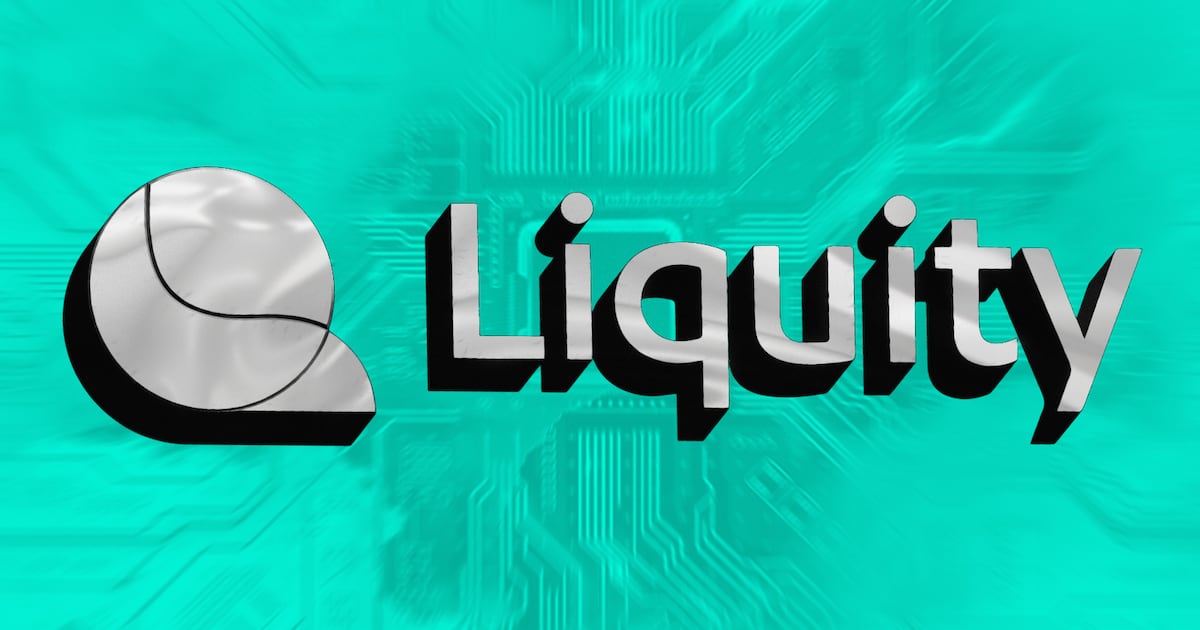Liquidity's new stablecoin curve is inspired by Tokenomics. Users who own the protocol's governance token can direct its revenue to liquidity providers. This is another attempt to balance immutability and flexibility in a new stablecoin called BOLD.
Once a top 10 stablecoin, Liquidity's LUSD has won fans among “decentralization maximalists” and deep-pocketed borrowers — that is, control of the token is entirely beyond the reach of its developers and users.
But that lack of control can spell trouble in a fast-moving market.
Amid a steep and steady decline in demand for LUSD, Liquidity executive Colin Platt says the company has two months to roll out its new stablecoin.
A key feature: “tokenomics” means “immutability” and helps balance the flexibility needed in the market.
Protocol returns
It includes a curve-driven system that holds liquidity's associated governance token LQTY and allows stake holders to vote on where to direct the protocol's revenue.
It aims to reward liquidity providers on decentralized exchanges and blockchain-based lending pools.
“All loan fees collected are immediately reversed and the coins are given to incentivize,” said Platt, head of product at Liquidity. News.
“We go through everything. That means we are not in the middle, acting as a middleman, earning something, holding the treasury.
Join the community to get our latest articles and updates
in a Blog postThe company says decentralization maximalists have nothing to fear.
“To be clear: LQTY [voters] No authority over core protocol parameters,” it reads.
“All they have the power to do is direct a portion of protocol revenue earmarked for ecosystem growth.
It's a small measure of control granted to people using the second version of the Liquidity Protocol — which runs alongside the first on Ethereum — and a new stablecoin called BOLD.
BOLD will address two shortcomings that contributed to LUSD's steep decline over the past year, Platt said.
LUSD decline
Liquidity is a borrowing protocol that allows users to mint a dollar-pegged stablecoin, LUSD, against ether collateral.
But unlike similar protocols, LUSD waives interest rates for a one-time 0.5% fee, regardless of loan size or duration.
BOLD has borrower-selected interest rates rather than its predecessor's one-time fee. It also accepts staked ether versions as collateral.
“When people talk to us, they come from two different backgrounds,” Platt said.
The first is crypto-specific venture and deep-pocketed users like hedge funds, as well as people who have made their fortunes in crypto. According to Platt, the average LUSD loan is about $250,000.
Those big wallets “want to know what the risks are,” he said. “Governance risks and proxy contracts are very easily quantifiable risks and liquidity is a standout.”
'We lost market share to people trying to use other collateral.'
– Colin Platt, Liquidity
Others are “decentralized maxis” — short for “maximalists” — who value financial assets beyond the reach of governments and their own meddling software developers.
So-called centralized stablecoins, like Circle's USDC, can be seized by their issuers, often at the behest of governments when tokens appear to have been stolen or laundered.
Between 10% and 25% of Liquidity's users have a “decentralized Maxis” account, Platt speculates.
He hopes BOLD will appeal to both sides of Liquidity's current user base.
10 forks
In August 2023, just under $300 million LUSD was in circulation. As of Tuesday, it was a quarter of that number with just over $69 million in circulation. Meanwhile, the total stablecoin supply has seen steady growth and is now approaching an all-time high.
The plot decline was attributed to two things, including growing interest in stablecoins backed by yield-bearing collateral, such as liquid staking tokens issued by protocols Lido and Rocket Pool.
“We've lost market share to people trying to use it [other] Collateral,” he said.
The new stablecoin will follow at least 10 approved forks or copies, including new collateral, user-set interest rates, and a way for LQTY holders to reward investors who provide liquidity for BOLD on decentralized exchanges.
By allowing select developers to copy the liquidity code for BOLD, the company hopes the associated tokens can gain market share on Layer 2 blockchains, which are processing a growing share of Ethereum-based transactions.
“Our brand is very diehard, core [Ethereum]” said Max Feige, Head of Liquidity Growth News. “Also [liquid staking tokens] It took us three years to join. So, you know, these forks don't really represent lost market share for us. Where there was nothing before, there is now something.
Alex Gilbert News'Diffie correspondent from New York. You can reach him at [email protected].
Related TopicsSTABLECOIN







